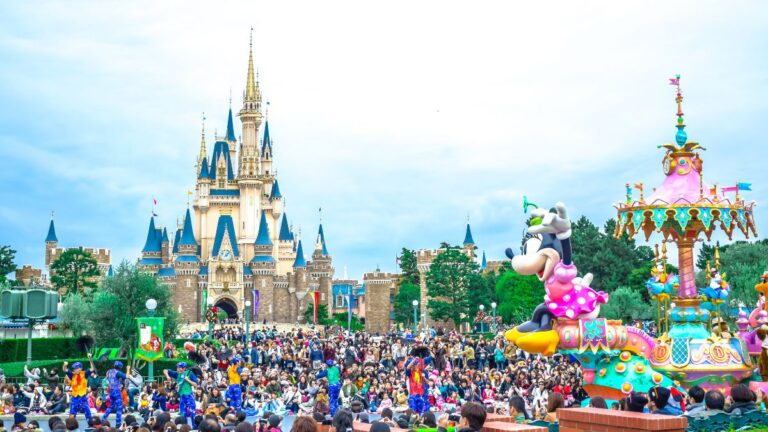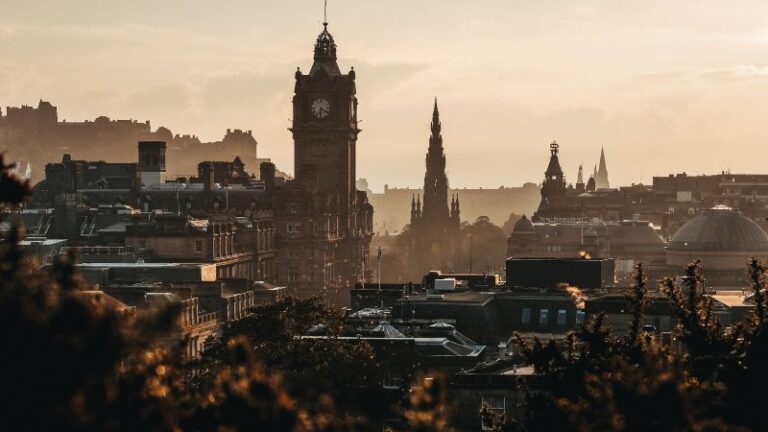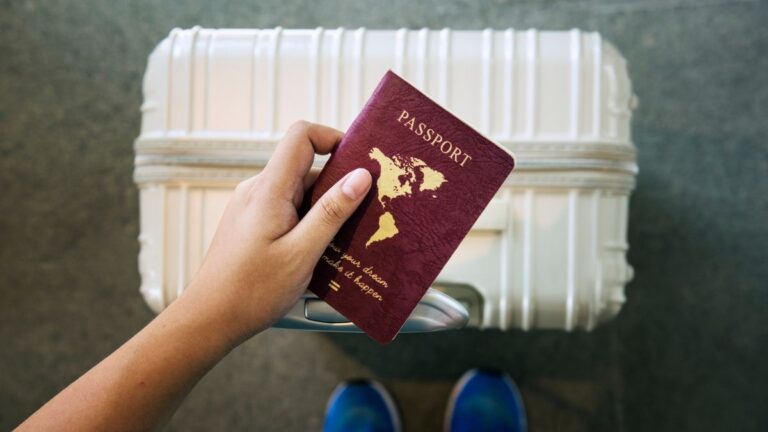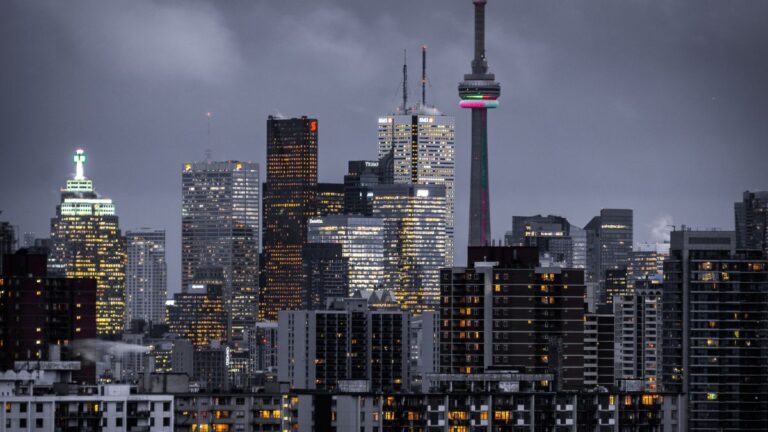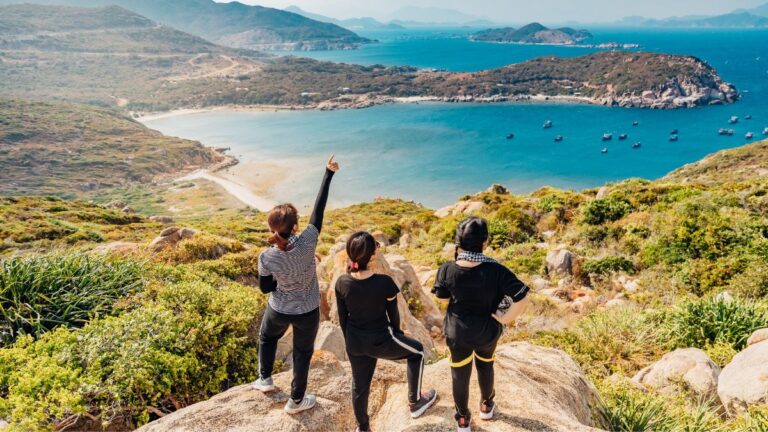Worst Time to Visit French Polynesia: Wet Season Woes and High Tourist Season
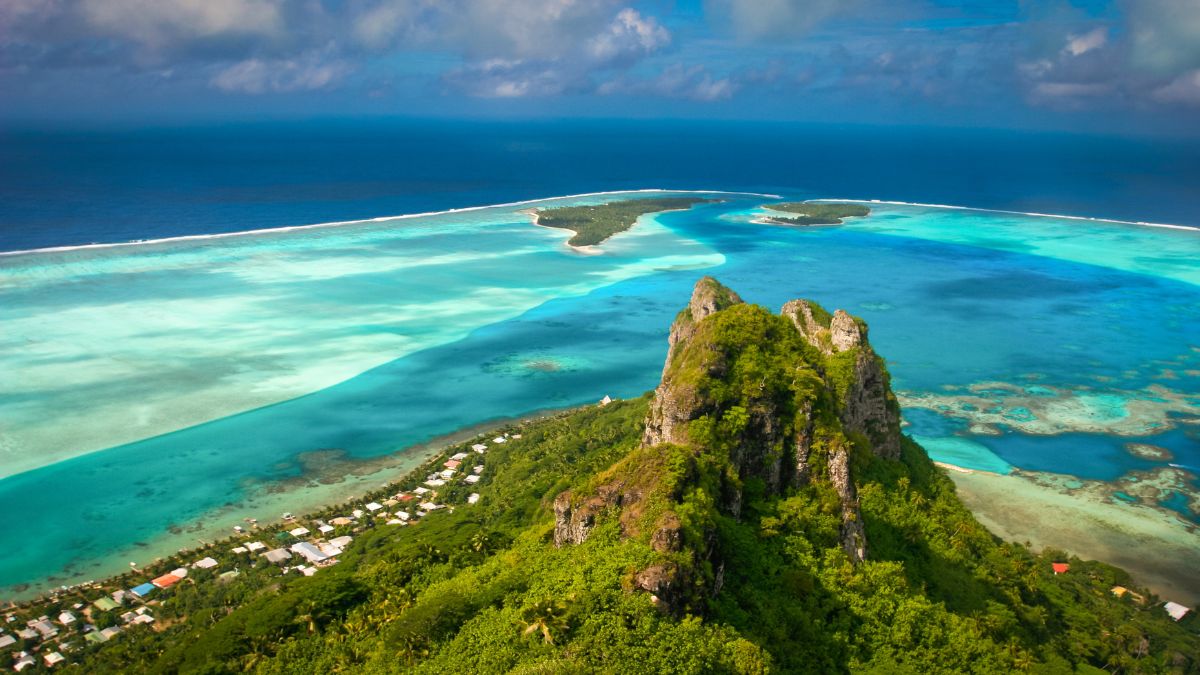
As participants in Amazon Associates and other programs, we earn from qualifying purchases. This comes at no additional cost to you. For more details, see our Affiliate Disclosure.
French Polynesia, with its postcard-perfect beaches and crystal-clear waters, is a dream destination for many. However, just like any other paradise on Earth, it has its challenging seasons. Whether it’s the unpredictable wet season or the bustling high tourist times, there are periods when this tropical haven might not offer the idyllic experience you’re seeking.
HIGHLIGHTS
- French Polynesia’s wet season, from November to April, brings potential challenges like cyclones and high humidity, while the high tourist season sees increased crowds and costs.
- Traveling during off-peak months to French Polynesia offers benefits such as fewer crowds and potential cost savings, but comes with weather uncertainties and limited services.
- Engaging with locals, being flexible with itineraries, and having comprehensive travel insurance can help travelers navigate challenges during their visit.
- Alternative tropical destinations like Fiji, Maldives, and the Cook Islands offer comparable experiences when French Polynesia isn’t at its best.
In this article, we’ll delve into the less favorable times to visit French Polynesia, so you can plan your trip wisely and get the most out of this South Pacific gem.
Understanding the Wet Season: Rain, Humidity, and More
French Polynesia, a collection of 118 islands and atolls spread across the vast South Pacific, is subject to a tropical climate. This means it undergoes distinct wet and dry seasons. While the dry season offers sun-kissed days with moderate humidity, the wet season can be quite the opposite, bringing its own set of challenges for travelers. Let’s delve deeper into understanding what this season entails.
1. Timing Matters: Typically stretching from November to April, the wet season corresponds with the Southern Hemisphere’s summer months.
2. Intense Rainfall: It’s not called the ‘wet’ season without reason. During these months, French Polynesia can experience short but intense bursts of rain. While it may clear up quickly, these showers can be heavy, causing temporary disruptions to outdoor activities.
3. Sky-high Humidity: The wet season is also synonymous with high humidity levels. The moist air can make the temperatures feel warmer than they actually are, leading to discomfort, especially if you’re not used to such conditions. It’s essential to stay hydrated and wear breathable clothing.
4. Potential for Cyclones: Though relatively rare, French Polynesia can be susceptible to tropical cyclones during this period. These cyclones can bring strong winds, heavy rain, and rough seas, impacting transportation and accommodations.
5. Nature’s Resplendence: On the brighter side, the wet season ensures lush landscapes, with waterfalls at their most majestic and flora in full bloom. This can be a treat for nature enthusiasts and photographers.
6. Precautions and Preparations: If you do decide to visit during the wet season, it’s vital to be prepared. Always check the weather forecast, carry rain gear, and be flexible with your plans.
While the wet season in French Polynesia has its downsides, understanding its intricacies can help you navigate your trip better. With the right attitude and precautions, you can still enjoy the myriad beauties the islands have to offer, albeit with a few raindrops in tow.
High Tourist Season: The Crowds and the Costs
Every year, French Polynesia, with its pristine beaches, vibrant marine life, and inviting Polynesian culture, draws in countless travelers from all corners of the world. Though this archipelago welcomes guests year-round, there are specific months when its islands see a significant surge in tourism.
Dubbed as the “high tourist season,” this period brings with it the challenges of crowds and increased costs. Here’s what you need to know about this busy travel window.
1. Peak Months: The high tourist season in French Polynesia primarily spans from May to October, aligning with the dry season and cooler temperatures.
2. Popularity Overcrowded: Popular spots like Bora Bora, Moorea, and Tahiti witness a spike in visitors during these months. This means that beaches, restaurants, and attractions can become crowded, potentially diminishing the sense of seclusion many seek in these islands.
3. Hike in Prices: As demand surges, so do the prices. From accommodation to tours and even meals, expect to pay a premium during the high season. It’s advisable to book well in advance to secure the best deals.
4. Limited Availability: Popular resorts, activities, and even inter-island flights can get fully booked quickly. If you have specific places or experiences in mind, early reservations are crucial.
5. Events and Festivals: The high season often coincides with numerous cultural events and festivals, such as the Heiva I Tahiti, which celebrates Polynesian dance and music. While these events offer a rich cultural experience, they can also contribute to the influx of tourists.
6. Perfect Weather, with a Price: The allure of the high season is undeniable, with its clear skies, pleasant temperatures, and minimal rainfall. But this perfect weather also attracts the masses, leading to the challenges discussed.
7. Weighing the Pros and Cons: If you’re someone who prefers a buzzing atmosphere and doesn’t mind sharing the beauty of French Polynesia with many others, the high season is your best bet. However, if tranquility and cost-saving are high on your agenda, you might want to reconsider.
The high tourist season in French Polynesia offers an array of experiences, with its impeccable weather and vibrant events. But the trade-offs of crowds and costs require thoughtful planning and consideration. Being informed can help you make the best decision for your ideal Polynesian getaway.
Potential Weather Woes: From Cyclones to Intermittent Showers
French Polynesia’s allure, with its shimmering blue lagoons and palm-fringed beaches, often overshadows the fact that it is situated in the heart of the tropics, making it susceptible to a range of weather woes. When planning a trip to this paradise, it’s crucial to be aware of the potential climatic challenges that might arise.
The archipelago’s location in the South Pacific makes it a potential target for cyclones, especially during the wet season that runs from November to April. These cyclones, though relatively infrequent, can bring fierce winds, torrential rain, and turbulent seas, potentially disrupting travel plans, causing damage, and posing risks to unprepared visitors.
Intermittent showers, a common feature of the wet season, can be both a blessing and a bane. While they nourish the lush landscapes and provide a respite from the heat, they can also disrupt outdoor activities. These showers are typically short-lived but can be intense, making it advisable to carry rain gear and be prepared to adjust plans on the go.
Additionally, the high humidity levels that accompany the wet season can catch travelers off guard. The dense, moist air can make temperatures feel much hotter than they are, leading to discomfort for those unaccustomed to such conditions. This calls for lightweight, breathable clothing and a constant intake of fluids to stay hydrated.
But it’s not all challenging. Many travelers find a unique charm in visiting French Polynesia during its less predictable months. The cascading waterfalls become more magnificent after a downpour, the rainbows more frequent, and the islands seem to come alive with vibrant hues of green.
While French Polynesia’s weather can be unpredictable, being prepared and flexible can turn potential woes into memorable experiences. The islands, with their resilient spirit and unmatched beauty, promise a memorable experience regardless of when you choose to visit.
The Cultural Perspective: Festivals, Holidays, and Tourist Influx
French Polynesia’s rich tapestry of culture and traditions is deeply intertwined with its climate and tourist seasons. When looking at travel plans from a cultural lens, it’s essential to understand how festivals, holidays, and the tourist influx shape the region’s ambiance and offerings.
The Polynesian islands have a rhythm of life that’s been handed down through generations. Rooted in ancient traditions, many of the islands’ most significant events revolve around cultural celebrations that draw both locals and tourists alike. The Heiva I Tahiti, for instance, is a month-long celebration held every July, commemorating the rich Polynesian heritage through song, dance, and athletic competitions.
While it’s a spectacle that offers a deep dive into the local culture, it also means that the islands, especially Tahiti, see an increased number of visitors, leading to crowded venues and booked accommodations.
Similarly, Bastille Day on July 14th, a remnant of French Polynesia’s colonial past, is celebrated with fervor. Parades, dances, and fireworks light up the islands, making it a unique blend of Polynesian and French cultures. However, as with Heiva, it’s a period when many tourists plan their visits, leading to a significant influx and potential spikes in prices.
Beyond organized festivals, French Polynesia’s spontaneous local celebrations – from community feasts to dance performances on the beach – offer a window into the soul of the islands. However, these too can be influenced by the ebb and flow of tourists. While some events become more vibrant and elaborate to cater to the international audience, others might lose a bit of their authenticity in the process.
Furthermore, international holidays, particularly those from Western calendars like Christmas and New Year, see another wave of tourists. While these times can be joyous with unique Polynesian twists to traditional celebrations, they also mean that travel and accommodations can be at a premium.
Traveling Off-Peak: Benefits and Drawbacks
Traveling to French Polynesia outside of its high tourist season – essentially during its off-peak months – can offer a markedly different experience than the bustling peak months. Like any destination, there are both benefits and drawbacks to venturing during the quieter times. Let’s delve into what one can expect when choosing this less-trodden path.
Benefits:
- Cost Savings: Off-peak travel often translates to reduced prices. Whether it’s airfare, accommodations, or even some activities, you’re likely to find discounts and deals that aren’t available during the high season.
- Fewer Crowds: One of the primary perks of traveling during the off-peak season is the reduced number of tourists. Popular spots, be it the beaches of Bora Bora or the markets of Papeete, are less crowded, providing a more serene and intimate experience.
- Authentic Cultural Interactions: With fewer tourists around, locals revert to their everyday rhythms. This can present a unique opportunity for travelers to immerse themselves in authentic cultural experiences, from village gatherings to traditional meals.
- Flexible Itinerary: With fewer visitors, there’s often more availability for accommodations and activities. This means you can have a more spontaneous and flexible itinerary, allowing you to decide your activities on a whim.
Drawbacks:
- Weather Uncertainties: Traveling off-peak in French Polynesia typically coincides with the wet season. This means potential intermittent showers, high humidity, and even the occasional cyclone.
- Limited Services: Some resorts, restaurants, or tour operators may reduce their services or even close during the off-peak season. This could limit your options or require more careful planning.
- Maintenance Period: Since fewer tourists are around, some facilities might use this time for renovations or maintenance, which could impact the quality or availability of certain amenities.
- Missed Events: The high season often aligns with major cultural and festive events. Traveling off-peak might mean missing out on some of these significant celebrations.
Traveling off-peak to French Polynesia can be a deeply rewarding experience, allowing for a different perspective of the islands. While the serenity and cost savings are significant advantages, it’s crucial to be prepared for the potential challenges the season might pose. As with any travel decision, it’s all about aligning your priorities and managing expectations.
Tips to Navigate the Challenges: Making the Most of Your Trip
Whether you’re journeying to French Polynesia during the bustling high season or the quieter off-peak months, challenges can arise. Yet, with a bit of foresight and a few handy tips, you can navigate these challenges seamlessly and ensure a memorable trip. Here’s how you can make the most of your Polynesian adventure, regardless of when you visit:
- Stay Informed: Before your trip, regularly check weather forecasts, especially if you’re traveling during the cyclone-prone months. This can help you pack appropriately and plan your activities accordingly.
- Flexible Itinerary: While planning is essential, having some flexibility in your schedule can make a world of difference. This way, if the weather turns or an unforeseen circumstance arises, you can easily adjust your plans.
- Pack Smart: Even if you’re traveling during the drier months, packing a lightweight rain jacket or poncho can be a lifesaver. Similarly, bring breathable clothing, comfortable footwear, and essential sun protection.
- Book in Advance (But Not Always): For peak seasons, it’s wise to secure your accommodations, inter-island transfers, and special tours well in advance. However, if traveling during off-peak months, you might snag last-minute deals by waiting.
- Engage with Locals: Residents are the best resource for insider tips. They can provide recommendations for less touristy spots, upcoming local events, or even advice on how to handle typical challenges.
- Stay Connected: Invest in a local SIM card or a portable Wi-Fi device to have access to local networks. Staying connected can help you access real-time information, make bookings, or even translate local languages when needed.
- Travel Insurance: Considering the potential for weather disruptions or other unforeseen events, securing comprehensive travel insurance is a wise move. Ensure it covers trip cancellations, delays, and medical emergencies.
- Respect the Environment: French Polynesia’s beauty lies in its pristine nature. Ensure you’re doing your part by minimizing waste, respecting local guidelines, and practicing eco-friendly tourism.
- Embrace the Unexpected: Sometimes, the best memories come from unplanned moments. Whether it’s a surprise rain shower leading to a double rainbow or an unplanned detour introducing you to a hidden gem, embrace the spontaneity.
- Relax and Enjoy: Remember, you’re in one of the world’s most beautiful destinations. Things might not always go as planned, but with the right mindset, any challenge can be turned into an opportunity.
Every travel experience, even in paradise, comes with its set of challenges. But with a little preparation and a positive attitude, you can ensure that these challenges don’t overshadow the wonders that French Polynesia has to offer.
Alternative Destinations: When French Polynesia isn’t at its Best
If you’re having second thoughts about visiting French Polynesia due to seasonal challenges or just wish to explore alternatives that offer a similar tropical allure, you’re in luck. There are myriad destinations across the globe that promise idyllic beaches, rich cultures, and mesmerizing underwater worlds. Here are some destinations that can provide a comparable experience when French Polynesia isn’t at its best:
- Fiji: Located in the South Pacific, Fiji is an archipelago of more than 300 islands. Known for its rugged landscapes, palm-lined beaches, and coral reefs, Fiji also boasts a vibrant Melanesian culture. With a range of luxury resorts to backpacker retreats, there’s something for every traveler.
- Maldives: This tropical paradise in the Indian Ocean is renowned for its overwater bungalows, clear turquoise waters, and vibrant marine life. It’s a diver’s dream, with an array of underwater experiences, from manta ray encounters to exploring coral gardens.
- Cook Islands: Another South Pacific gem, the Cook Islands are less commercialized than some other tropical destinations. Rarotonga and Aitutaki are the most famous islands, offering a mix of beaches, culture, and adventure.
- Belize: Situated on the eastern coast of Central America, Belize offers a unique blend of Caribbean and Mayan influences. Beyond its stunning beaches, it’s home to the second-largest barrier reef in the world, ancient Mayan ruins, and lush jungles.
- Seychelles: Located off the east coast of Africa, Seychelles is an archipelago of 115 islands. Granite boulders, white sand beaches, and rich marine parks make it an enticing alternative to French Polynesia.
- Indonesia (Bali and Raja Ampat): While Bali is famous for its spiritual ambiance, rice terraces, and beaches, Raja Ampat in eastern Indonesia is a diver’s paradise with some of the richest marine biodiversity on Earth.
- Samoa: Another Pacific treasure, Samoa is a postcard-perfect destination with cascading waterfalls, crystal-clear lagoons, and a deeply-rooted Polynesian culture that’s still vibrant today.
- Tonga: Less frequented than some other South Pacific nations, Tonga offers an authentic island experience. It’s also one of the few places where you can swim with humpback whales.
- Vanuatu: With its active volcanoes, traditional kastom villages, and diverse underwater environments, Vanuatu is a place of adventure and culture.
- Turks and Caicos: Situated in the Caribbean, these islands are renowned for their stunning beaches, particularly Grace Bay. With a rich marine ecosystem, it’s also a haven for divers and snorkelers.
While French Polynesia is undeniably enchanting, the world is dotted with tropical paradises waiting to be explored. Depending on the time of year and your preferences, one of these alternative destinations might just be the perfect fit for your next getaway.

